Wildlife: other organismsIn contrast to the land, the Antarctic marine environment is rich in animal and plant life. Previous sections illustrate penguins and seals near the top of the food web, but at the bottom of the web are micro-organisms, such as diatoms. Diatoms are unicellular organism (Protista), characterized by a silica shell, commonly of intricate form. They are yellow, orange or brown, and stain the underside of ice floes in sea water.
On land, in this part of Antarctic, there are few plants. Mosses turn green in mid-summer when the snow melts, whilst low-level rocky outcrops commonly support lichens. Micro-organisms include algae, which are implicated in weathering of bedrock.
|
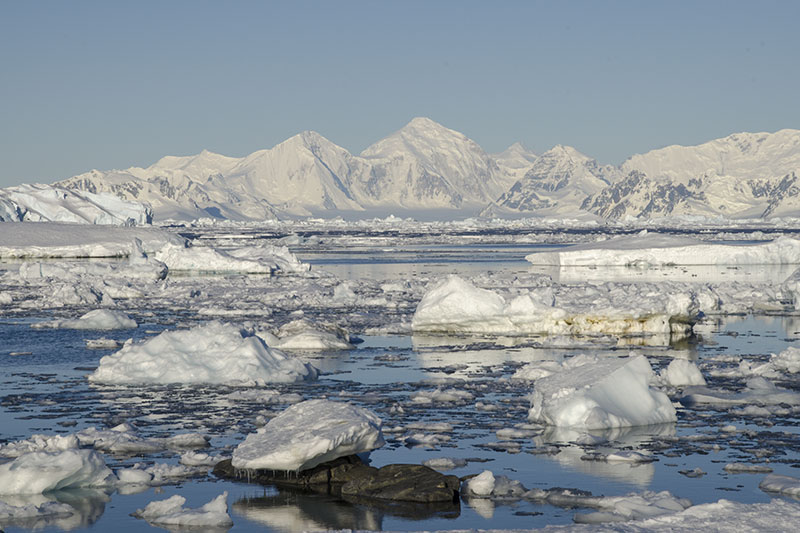 Abundant sea ice near Rothera supports extensive development of diatoms. By mid-summer, large-scale yellow/orange staining is evident in many sea-ice floes. | 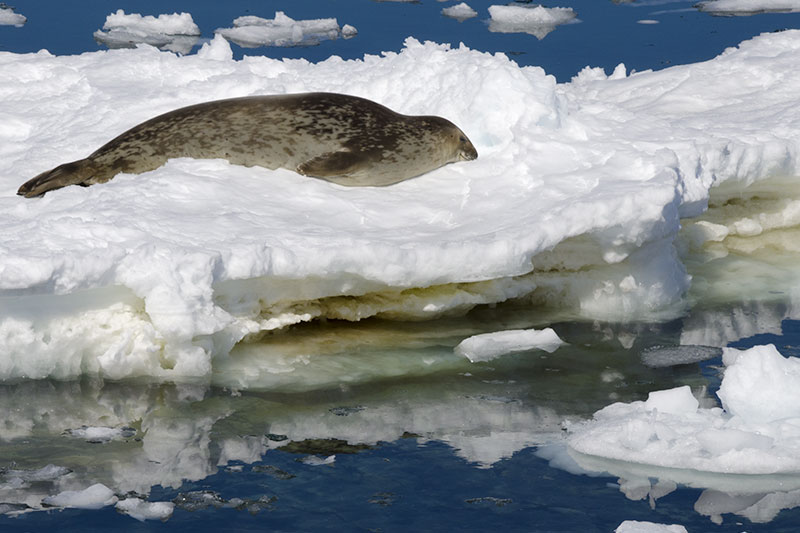 A Weddell seal rests on a floe with at least two levels of diatom staining. | 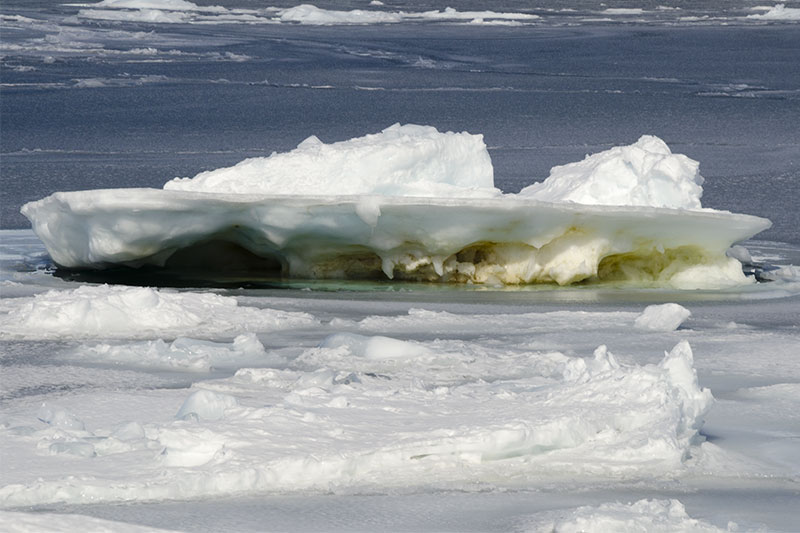 This stranded floe shows the bright orange staining typical of diatoms. | 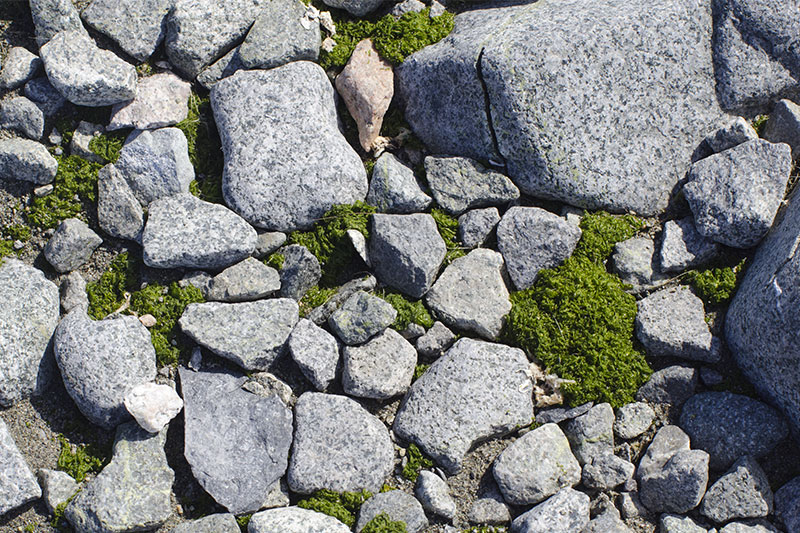 Snow-melt and warmth from the sun allows mosses between stones to turn green. |
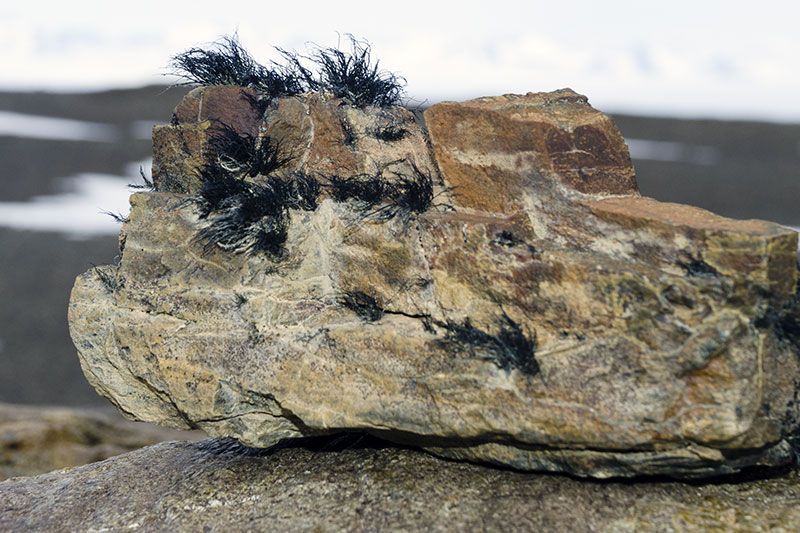 Tufts of lichen attached to a glacially transported boulder on Alexander Island. | 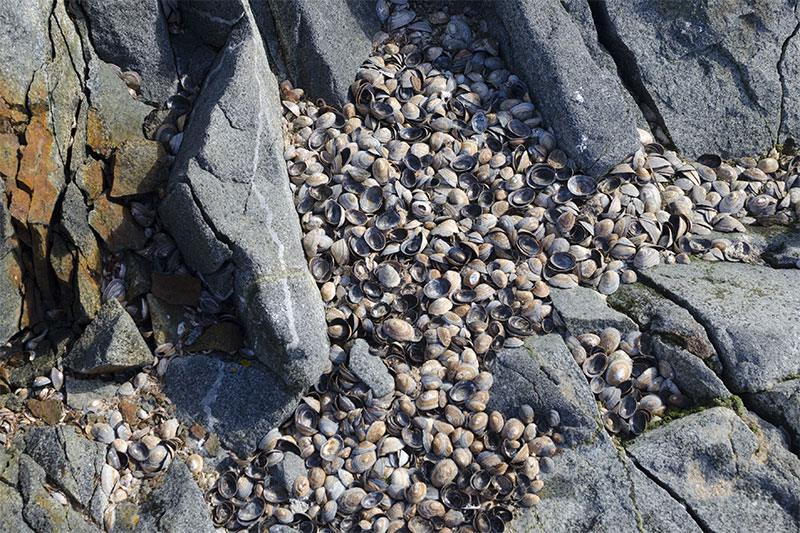 A collection of bivalve shells on a shoreline rock outcrop, brought there by gulls, who used the rock to crack open the shells. | | |